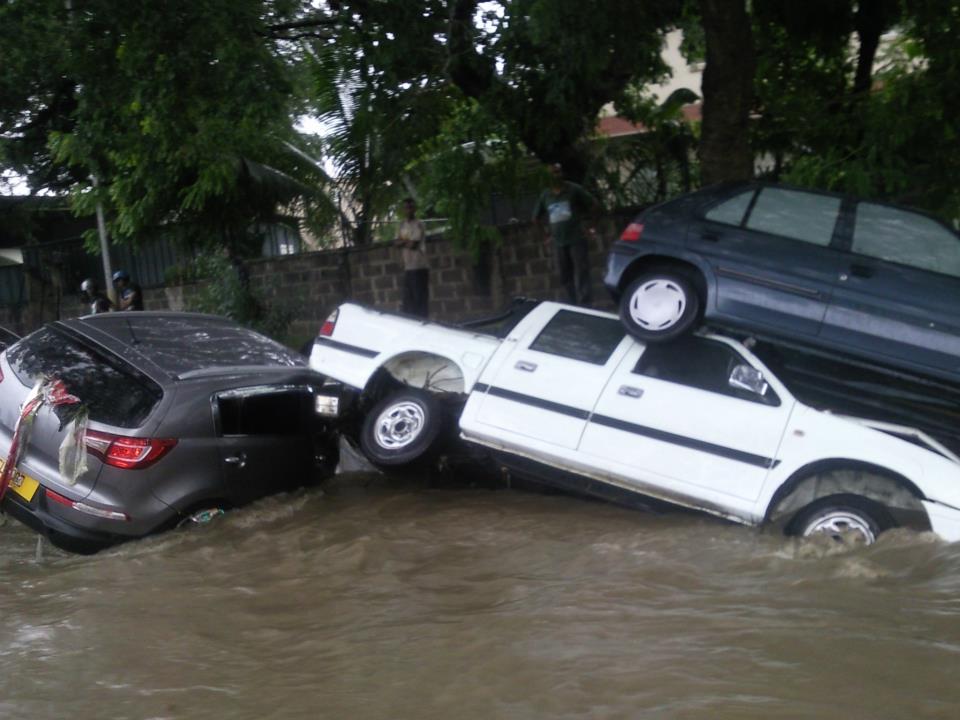Flash Flooding in the Capital of Mauritius, Again
A few days ago, just before Easter, Mauritius was subject to a short period of intense rainfall which caused flash floodings in the capital and led to the death of 11 people. Water level was said to have risen to the roofs of houses where some people had taken refuge. This unfortunate event even made the news on the national French news TV, TF1.
One of the areas severely flooded in Port-Louis was in the Caudan Waterfront area, a favourite destination among tourists. A similar episode of flash flooding in the exact same place occurred the previous month, in February. It was then found that roadworks undertaken near a small stream had partially blocked it. When heavy rain fell, the blocked stream quickly overflowed and flooded the Caudan area.
Fail, fail, fail
You’d think lessons would be learnt and corrective actions taken yet a month later, the exact same situation occurred, with fatal consequences. The stream was still blocked, heavy rain fell, the stream overflowed and flooded Caudan, in particular the tunnels leading to it and an underground car park nearby and people within drowned. The Caudan tunnel literally filled up within 2 minutes, such was the volume of water. Watch this 2 minute video which starts filming the tunnel as starts filling up and ends with water to its brim.
Another cause for the flooding elsewhere in the Capital was the result of roadworks occurring on the motorway. Again, there seemed to have been a lack of drains made available for excess water.
Many fingers have been pointed at the weather forecast services for its total lack of warning. Weather forecasting is an inaccurate science and let’s face it, who will cancel a trip to the shopping centre on Easter even if warned of heavy rainfall?
Mauritius is regularly battered by cyclones every summer and these cyclones bring strong winds and heavy rain. The country usually faces it without severe flooding or people dying. In this particular case, the fatal consequences were not due to a lack of warning from the meteorological services and people being caught short without an umbrella but drains being blocked with the obvious consequences.
How to avoid this again in the future
The solution to avoid repeating these floodings is very obvious then. The implementation of drains should not be too difficult either despite Port-Louis being a heavily-built area concreted all over. On one side you have a mountain range which is at the back of the city. Opposite it is the sea. There is therefore a slope from the mountain to the sea. The blocked stream which flooded Caudan is called Ruisseau Le Pouce and takes its name from the mountain it originates from and flows to the sea. A natural drain. Even if space is at a premium in the enclosed area that is Port-Louis, it is still possible to build over such drains while still keeping them flowing and unblocked. The slope is already there to channel water to the sea.
If such drains are built and maintained, whether the weather forecast services fail or not in the future to predict heavy rainfalls, excess surface water will still be appropriately channelled away to the sea.
Advice for travellers
If you are travelling to Caudan in the future, the drains are still blocked and the water level is rising rapidly, don’t stay on low ground or worse in the tunnels or underground parking. Make your way to higher ground, torwards the mountains if you are in a vehicle and have time, or simply go the first floor or higher of the nearest building you can find. Don’t rush to the underground car park to save your car!
The good news is that due to the topography of Mauritius, it is very hard to get widespread flooding that frequently occurs on large spans of flat ground on continents. The centre of the island is a high plateau with rivers draining excess water from frequent rainfalls. Curepipe is a town on the high grounds inland that gets regular rainfalls but rarely sees any flooding, except a few localised ones that usually occur due to blocked drains. The flooding that occurred in the capital was also the result of blocked drains as explained and all the water flowed towards the sea where the Caudan area is located.
Tourist areas like Grand-bay and Flic en Flac were unaffected.
Further reading:
http://www.yashvinblogs.com/national-mourning-day-flooding/
http://www.islandcrisis.net/torrential-rain-mauritius-30th-march-2013/comment-page-2/
